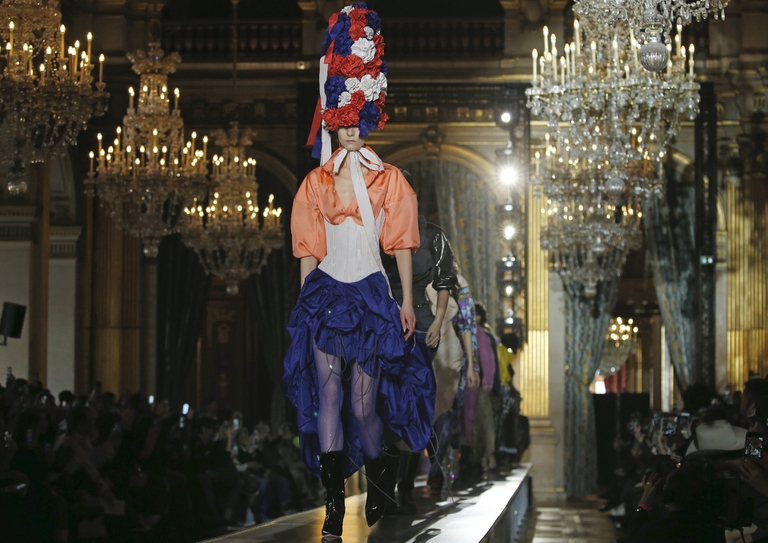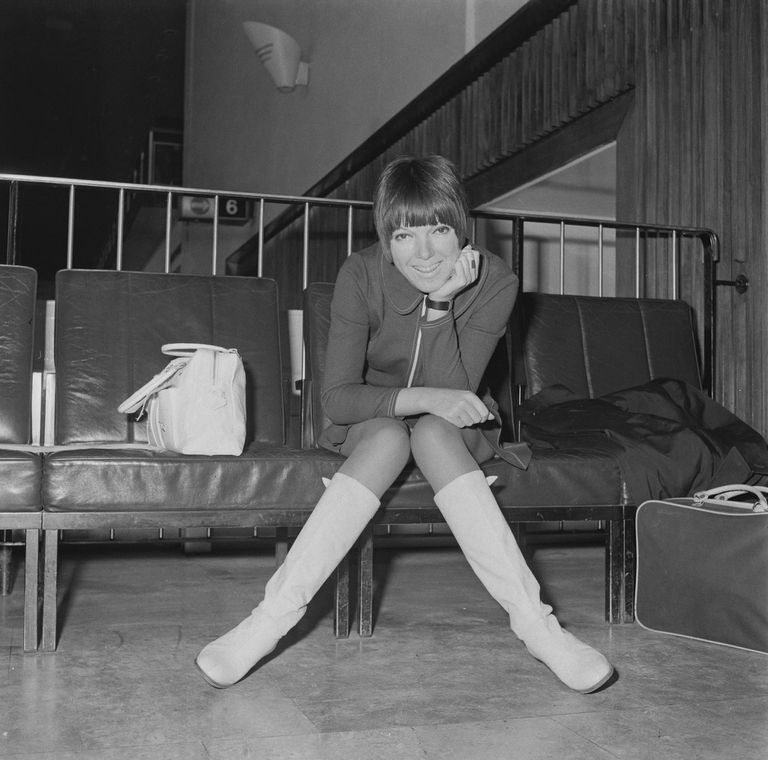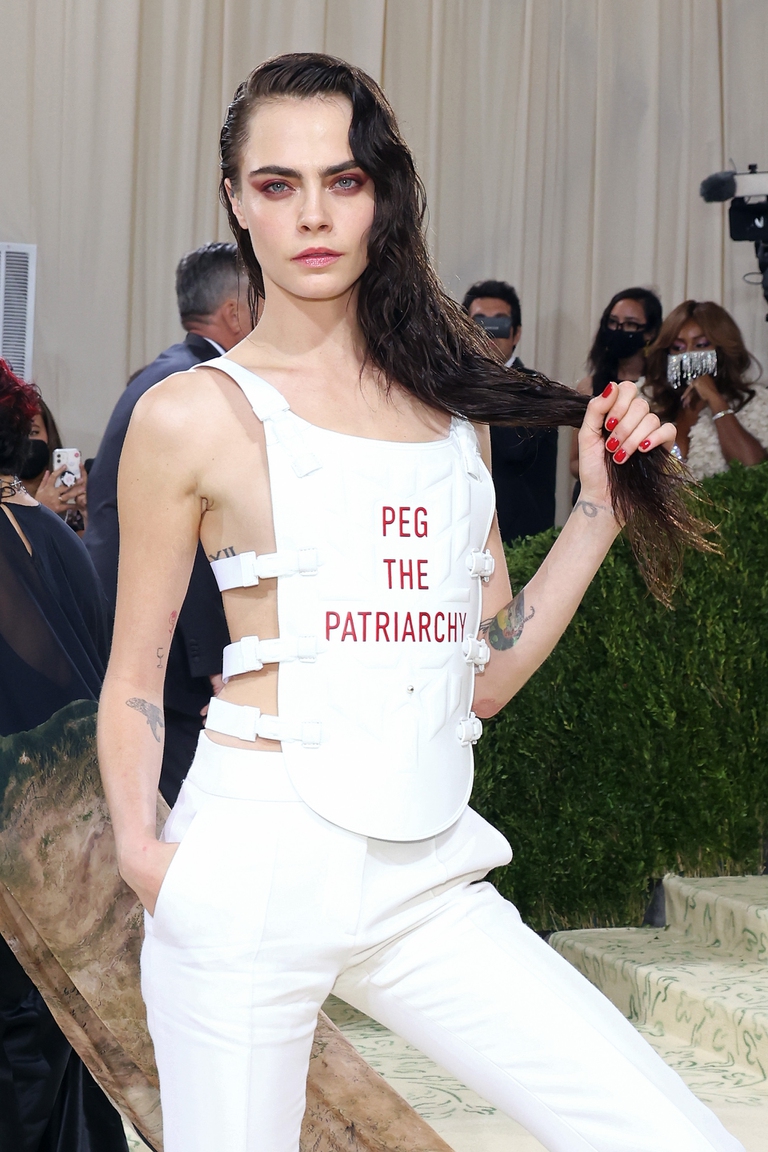https://www.lifegate.it/moda-femminismo-patriarcato
- |
- Fashion, feminism and patriarchy are more interconnected than you might think:everything we wear in a given era tells us a lot about society and the tensions within it.
- Garments such as corsets or trousers have a rich history from the point of view of feminist struggles and achievements.
- Today feminist slogans have conquered catwalks and red carpets, but it is important to ask ourselves what are the elements that make a society truly fair and inclusive, also from a look point of view.
Everything that we wear today more or less without asking ourselves too many problems has a history, it brings with it more or less positive meanings, claims struggles.In the evolution of women's costume there are garments and watershed eras that have now represented symbols of patriarchal coercion, now tools fight for feminism. The corset it went from being a tool of constraint to a useful garment for freely expressing one's sexuality, i pants they represented a means of emancipation for women and so did the miniskirt.
One thing that is important to point out though is that, a tfundamental plank of patriarchal society where we find ourselves is about how we feel and think about women's bodies and the way they dress.During the Middle Ages, but also during the Renaissance, they existed throughout Europe laws regarding clothing, especially for women.Since then, women's bodies have never stopped being a public thing, with all the control and demarcations of what is considered decent and appropriate and what is not.Not only that, beauty is still seen as a fundamental requirement for female people, who suffer enormous aesthetic pressure in this sense.
53 percent of American girls are 'dissatisfied with their bodies', a percentage that rises to 78 percent upon reaching the age of seventeen.A percentage that varies between 40 and 60 of elementary school girls are worried about their weight or for becoming “too fat”.59 percent of American women are dissatisfied with their body shape and 66 percent have expressed a desire to lose weight.
This data, released by NowFoundation, demonstrate how social acceptance for women you still go a lot through the external appearance.If in the Middle Ages the waist circumference was one of the parameters on the basis of which the social status of a woman could be judged, today the situation is not that different and, although the progress made by feminist struggles has been enormous, many still remain the stereotypes to be broken down when it comes to female appearance.
The corset, between patriarchy and Vivienne Westwood
For decades, the corset has been a symbol of patriarchal oppression, functional in making women immobile, passive and prone to fainting, with part of their social value dependent on the circumference of their waist because, as the fashion historian claims Valerie Steele in “The corset:a cultural history”, they came value rigidity and control in contrast to the working classes, freer in their customs and with bodies bent by work in the fields.
David Kunzle in “Fashion and fetishism” he describes it as “quintessential Victorian social horror”.The splints in whale bone, and later in steel, they surrounded the ribs and compressed the natural waist causing reduced vitality, rib deformities, damage to internal organs, congenital malformations and spontaneous abortions.

It will not have escaped your notice that the corset has forcefully returned to the looks of stars and ordinary people:after Vivienne Westwood in the Seventies it had given new meaning, making it go from an undergarment to a cool garment, today Gez Z, also thanks to cultural products such as the Netflix series "Bridgerton", is loving it again.
Vivienne Westwood before and Jean-Paul Gaultier then – remember the corset with cone cups worn by Madonna during the Blonde ambition tour? – they saw the corset as a means by which to give women control on the expression of one's sensuality, making it go from a symbol of rigidity and respectability to an object useful for breaking down a taboo.
As Valerie Steel writes, thanks to that corset Madonna throws her sexuality in the world's face.Today, who wore it as well Blanco on stage Sanremo, we are witnessing a further re-signification of this garment, which is progressively losing its gender connotation.
Pants:Amelia Bloomer, Coco Chanel and power dressing
You know Amelia Bloomer?Usually the re-signification of trousers as a female garment is associated with Coco Chanel, but in reality what the designer has done is make them desirable for high society ladies.
The first women's trousers, which were called "bloomers", were in fact an invention of the feminist journalist Amelia Bloomer.It was she who founded the first women's newspaper directed entirely by a woman, "The Lily", published for the first time in 1849 and through which Amelia suggested that women wear less restrictive clothing, like knickerbockers.Subsequently the journalist was involved in a movement to reform women's clothing, and on this occasion she wore the first women's trousers, called "bloomers" in her honor. very loose, narrow at the ankle and with a short skirt on top who immediately encountered hostility from the press and public opinion and not because they lacked modesty, there was too much of the stuff, but because of theinconsistency of making women wear a male garment.

© Getty Images
The fact of being able to wear comfortable clothing suitable for doing certain activities, such as sport, it was an important achievement but it underlies a fundamental bias:those garments were used by women for “doing men's things”.When women began to have working careers comparable to those of men, therefore not relegated to care roles or professions traditionally considered feminine, it became necessary for them, to be taken seriously, adopt clothes considered typical of the male wardrobe such as oversized shirts and jackets.
The miniskirt and the sexual revolution
Other significant changes in terms of women's clothing then occurred in the 1960s and 1970s:one above all the irreverent design of the miniskirt by Mary Quant, which quickly became a symbol of sexual revolution triggered by the advent of the contraceptive pill.Such short skirts at the time represented thewomen's clothing considered socially acceptable and they reflected women's new identity, which was expanding beyond domestic roles.

“The personal is political” is one of the best-known feminist slogans and dates back to the groups of feminist self-consciousness of those years.Well, wearing a miniskirt at the time was much more than a precise choice of look, it implied a social stance, cultural and political.As young women became more aware of how society treated them differently than their male peers, they banded together to fight for their right to wear a shorter skirt, but also to freely dispose of their bodies and own sexuality.
And now?
The look of what is defined as the fourth wave feminism differs from previous movements:those who define themselves as feminists today do not embrace just one way of dressing, but rather, the very concept of feminist struggle involves the freedom to dress exactly according to one's own taste and style.
Which is good and right if we lived in an ideal world.It's a shame that in 2015, not in the fifties, in a city ofAlabama has been proposed to ban the miniskirt, while a Kansas state senator in the same year he banned its use by the female part of his staff.Episodes like these combined with aesthetic pressure that we talked about at the beginning of this article demonstrate how even today i female dress codes are anything but free.

The road is still long, but i feminist messages today they are literally protagonists of catwalks and red carpets.From the feminist demonstration staged by Karl Lagerfeld for the Chanel spring summer 2015 fashion show, to the “We should all be feminist” t-shirt which Maria Grazia Chiuri proposed for Christian Dior's spring summer 2017 look Dear Delevingne at the 2021 Met Gala where she wore a bulletproof vest bearing the words "Peg the patriarchy", a slogan coined by the black queer sex educator and popularizer Luna Matatas and can be translated as “Put it in that post to the patriarchy”.
Maria Grazia Chiuri is always the mind and the hand behind the Sanremo looks of Chiara Ferragni, all too didactic in their desire to express feminist messages.But, slogans aside, which due to their ability to be incisive and reach many people necessarily simplify reality a lot, what is important is to work for create varied imaginaries, For ease the aesthetic pressure and to encourage personal expression.
